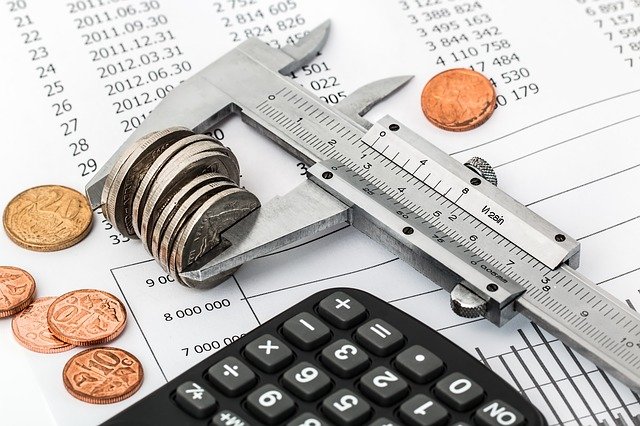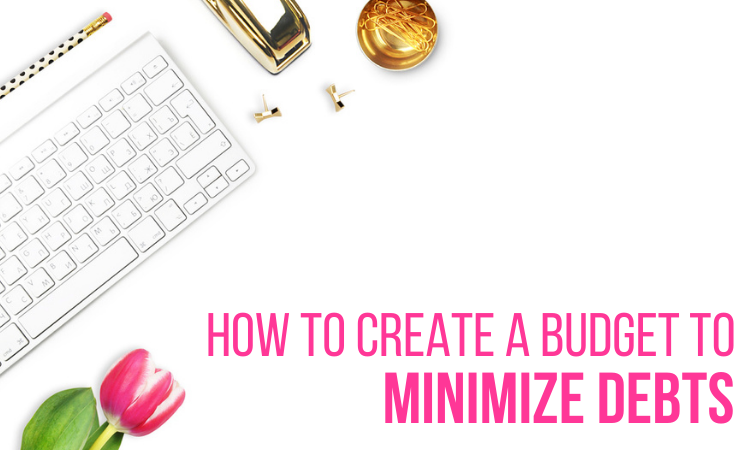If you finish each month in debt, wondering who ate the last few hundred dollars in your bank account, chances are you need to set yourself a budget! Fear not. We have you covered. In this guide, we’ll talk you through some easy steps to put a personal budget in place and minimize debts.
This is a sponsored post. Please refer to my disclosure for more information.

Assess Your Annual Expenses
Before you can create a budget, you must have a clear picture of your spending. The best way to capture every expense is to review all your outgoings over the past 12 months.
Use your bank statements to note down each expenditure in the past year. Add these to a spreadsheet and categorize them. Here are some recommended categories:
- Monthly fixed expenses (e.g., rent, bills)
- Annual fixed costs (e.g., insurance)
- General living expenses (e.g., food, travel)
- Personal spending (e.g., clothing)
By splitting your costs into these four categories, you can see areas where you can make a difference and where you can’t. Some expenses can be reduced (for example, getting a better car insurance deal). Some costs will be fixed (rent), and others will be areas where you can proactively reduce your spending (clothing).
Once you’ve completed this exercise, review each category. Look for any surprise expenses. Look at areas where your spending is higher than you imagined it to be. Review your total spend over the past 12 months. How does it fare with what you expected to see? How does it compare to your income?
Look For Obvious Cutbacks
The essence of a helpful budget is knowing how and where to save money. So now it’s time to start making cutbacks. Start by looking at the most prominent areas where you can save money. Here are some prompts to help you:
- Can you shop around for cheaper utility providers, such as your water and electricity?
- Can you find a better deal on your home, life, and car insurance?
- Could you save money making an annual purchase instead of a monthly direct debit (many companies offer a discount when you pay upfront for the year)
- Do you buy services or subscriptions that you don’t frequently use?
- Are you paying for something that you needed in the past but don’t need now?
Use these as a starting point. But go beyond these questions. Be strict about your spending and whether you genuinely need to make all those purchases on your bank statements. For most people, few line items are necessary, especially when trying to save money.
Use Debt Consolidation To Reduce Interest and Minimize Debts
Another significant potential saving is on the money you spend on your debts. More specifically, the money you pay on interests each month to cover those debt repayments.
If you make repayments for more than one debt (credit card, overdraft, or loan), you can save money by moving all these debts into one place. That is called debt consolidation, and you can click here to learn more about how this works.
Debt consolidation is increasingly popular. It will give you a fixed monthly spend on your debt, which will make it easier for you to manage your monthly budget.
Create A Personal Spending Plan
Once you’ve decided on all the areas in your budget you intend to reduce, it’s now time to examine your luxury and personal spending. Find ways to get that to a more manageable level.
The best way to do that is to create a personal spending plan. List all the areas you want to include in your spending plan, and set yourself a monthly limit. Here are some items you might want to have in your spending plan:
- Clothes
- Beauty products
- Gadgets and technology
- Vacations
- Going out (restaurants, bars)
- Non-essential travel
- Coffee, snacks, and lunches
Add other items to this list depending on what came up in your bank statements over the past 12 months.
Create Your Weekly Budget
The best way to manage (and stick to) a budget is to split it into weekly allocations instead of monthly. It is easier to keep tabs on what you are spending and how close you are to your limit.
So once you have a personal spending plan, create a weekly spending budget. Write this down on paper or use an online budgeting tool and note down each purchase during the week to make sure you stay on track.
Monitor Your Progress
At the end of each month, monitor your progress. It isn’t always easy to stay within budget, but by reviewing your spending at the end of each month, you can spot areas you might need to address. Did you need two takeouts that month? Maybe next month you can limit yourself to one.
Take Action Now
The earlier you address financial problems, the quicker you can start to manage them and minimize debts. Don’t wait for that lottery win. Take action now by setting up a strict budget, consolidating your debts, and getting your bank account back to a positive number.



